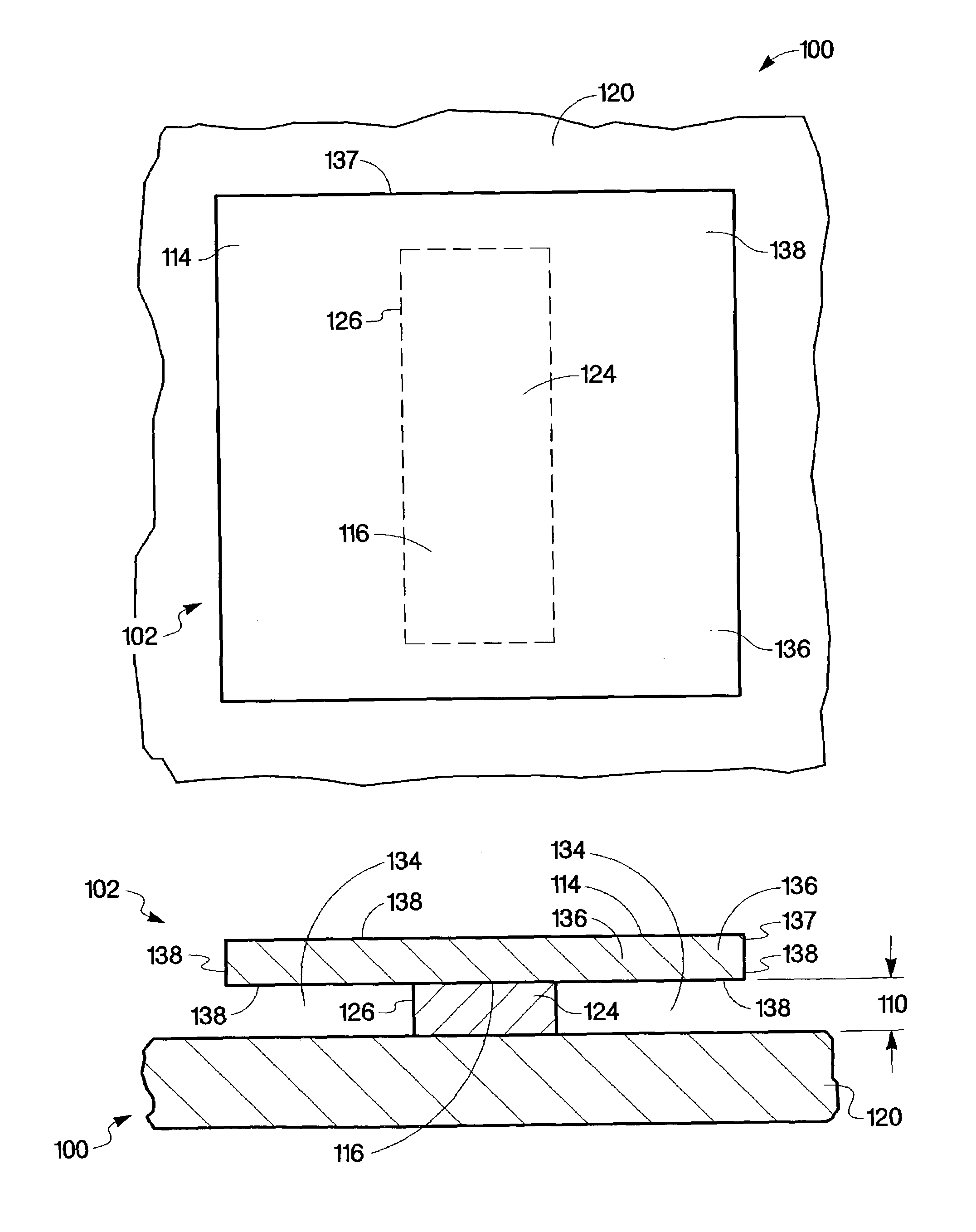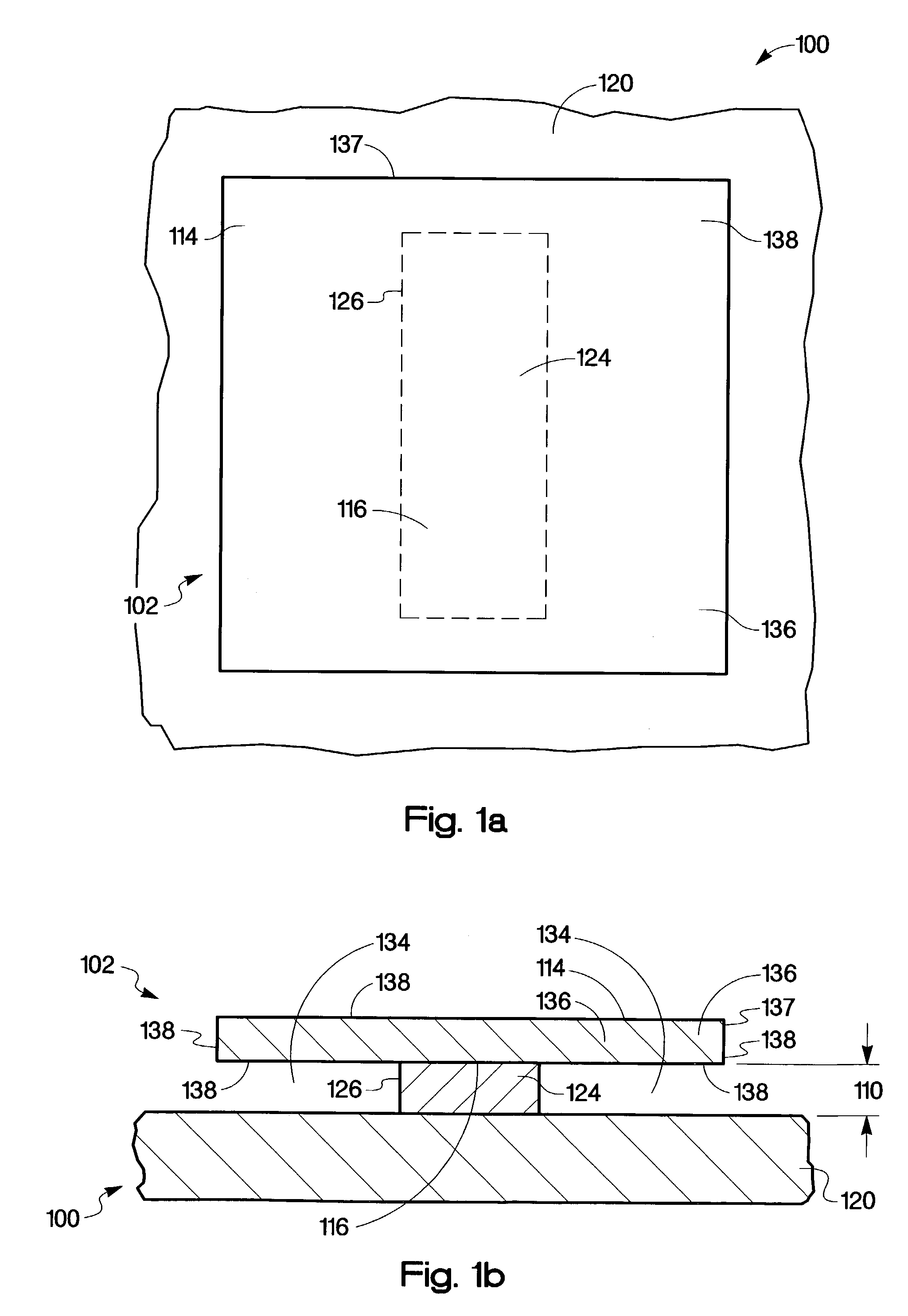Vacuum device having a getter
a vacuum device and getter technology, applied in vacuum obtaining/maintenance, positive displacement liquid engines, machines/engines, etc., can solve the problems of increasing the complexity and difficulty of assembly, increasing the size of the package, and the inability to produce either a thicker or a larger packag
- Summary
- Abstract
- Description
- Claims
- Application Information
AI Technical Summary
Problems solved by technology
Method used
Image
Examples
Embodiment Construction
[0018]Referring to FIG. 1a, an embodiment of vacuum device 100 of the present invention, in a top view, is shown. Getter structure 102 is utilized as a vacuum pump to maintain a vacuum or pressure below atmospheric pressure for vacuum device 100. Vacuum device 100 may be incorporated into any device utilizing a vacuum, such as, electronic devices, MEMS devices, mechanical devices, and optical devices to name a few. As electronic manufacturers look for higher orders of integration to reduce product costs, typically, package sizes get smaller leaving less room for getter material. Electronic circuits and devices disposed on a wafer or substrate limit the area available for getter structures. This limited area increases the desire to fabricate getters with high surface area structures having a small footprint on the substrate or wafer. In addition, in those embodiments utilizing wafer-level packaging, a technique that is becoming more popular for its low costs, placing a higher surface...
PUM
 Login to View More
Login to View More Abstract
Description
Claims
Application Information
 Login to View More
Login to View More - R&D
- Intellectual Property
- Life Sciences
- Materials
- Tech Scout
- Unparalleled Data Quality
- Higher Quality Content
- 60% Fewer Hallucinations
Browse by: Latest US Patents, China's latest patents, Technical Efficacy Thesaurus, Application Domain, Technology Topic, Popular Technical Reports.
© 2025 PatSnap. All rights reserved.Legal|Privacy policy|Modern Slavery Act Transparency Statement|Sitemap|About US| Contact US: help@patsnap.com



